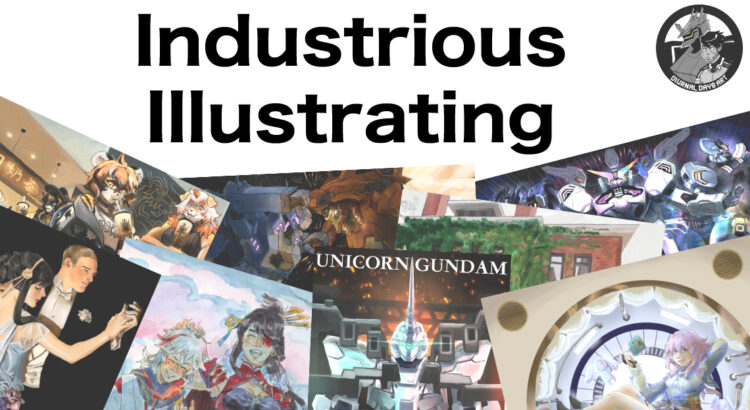Hello, and welcome back to another week of Industrious Illustrating! I’ve been super busy with midterms and midterm projects this week, but now that fall break is upon us I’ll have more time to draw for myself. I’m currently on the grind making new products to sell at Motor City Comic Con, so I’ve been thinking a lot about how much money I want to spend ordering new products and then how much I want to charge for them, which brings us to today’s topic:
Profit margins!
Profit margins are the difference between the cost of producing a product and the amount of money that the customer pays for them — so, the amount of money that the seller gets to take home at the end of the day. Good profit margins vary between industries and products, but generally the profit margin is at least 2x the original cost of producing the product so that the seller can put the profits toward paying for the production of new products, paying for their own living expenses, or both.
For independent artist sellers like myself, we oftentimes charge higher for our products than a large company making mass-produced goods would, as we make much smaller product runs (10-50 of a product rather than hundreds) and invest much of our own time and energy into making artwork on top of running a business, requiring larger returns on each product to justify the expense. For example, producing 11×17″ prints costs about $1 per print and prints of that size typically go for around $20 or more, but drawing the artwork that goes on those 11×17″ prints took many hours, meaning that we’d need to sell multiple $20 prints just to pay ourselves a minimum hourly wage for the artwork we made once costs have been subtracted from revenue.
As a case study of what a typical profit margin for a smaller product looks like, I recently designed these bottle cap pins which I’ve started selling online and plan to also sell at events in future. They’re made of metal, are about 1.2 inches in diameter, and feature the fanart I drew of a popular video game.

Because I ordered 20 of each bottle cap pin design, the per-unit cost was $1.6 — it would’ve been lower per unit if I’d ordered a larger quantity. However, as these were manufactured by a Chinese factory and had to be shipped to an agent for inspection before they were shipped to North America, I had to pay $18 for them to be shipped out of China, and then another $13 for them to be shipped out with another order of merchandise I’d made through the same middleman. Divided across 120 units of pins, that’s an additional per unit cost of approximately .20 cents, which brings the per-unit cost up to $1.8 a pin. ‘
Currently, I charge $10 per pin for individual sales, and approximately $8 per pin for bulk deal sales (e.g. buying all 6 pins together). This means I have about a 4x-5x production cost profit margin on my bottle cap pins. However, as the initial order of pins cost about $200, I’ll need to sell at least 20 individual pins or 4 $50 bulk deals just to earn back my production costs before I actually see a profit on these. Therefore, I was taking a decent risk when getting these produced — but as long as I can sell at least that amount of pins over time online and at events, I’ll be happy with my decision to try expanding my products into small items like pins.
Anyway, I hope that was a decently informative explainer about one aspect of running an art business, and I hope to see you guys again next week!



Leave a Reply
Be the First to Comment!